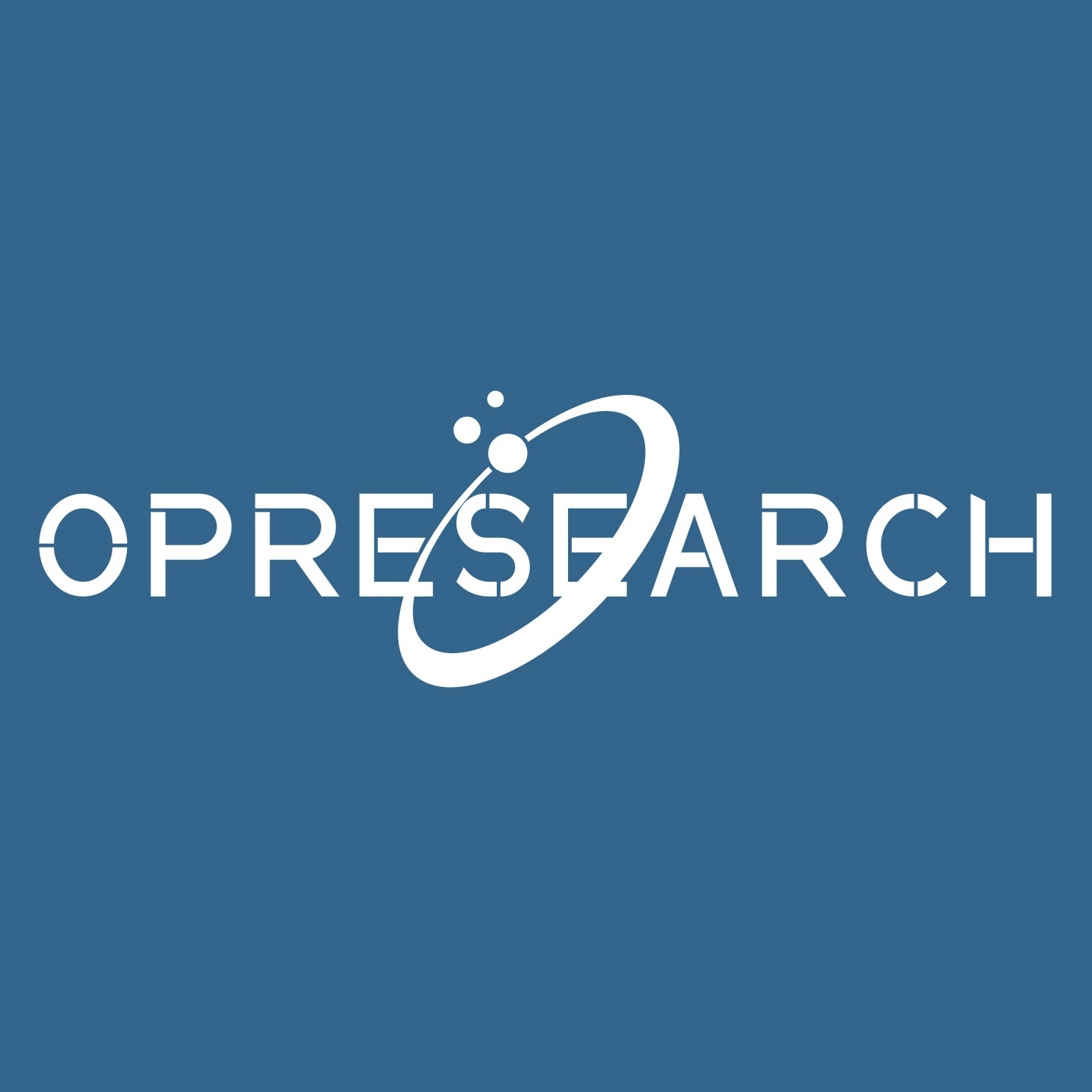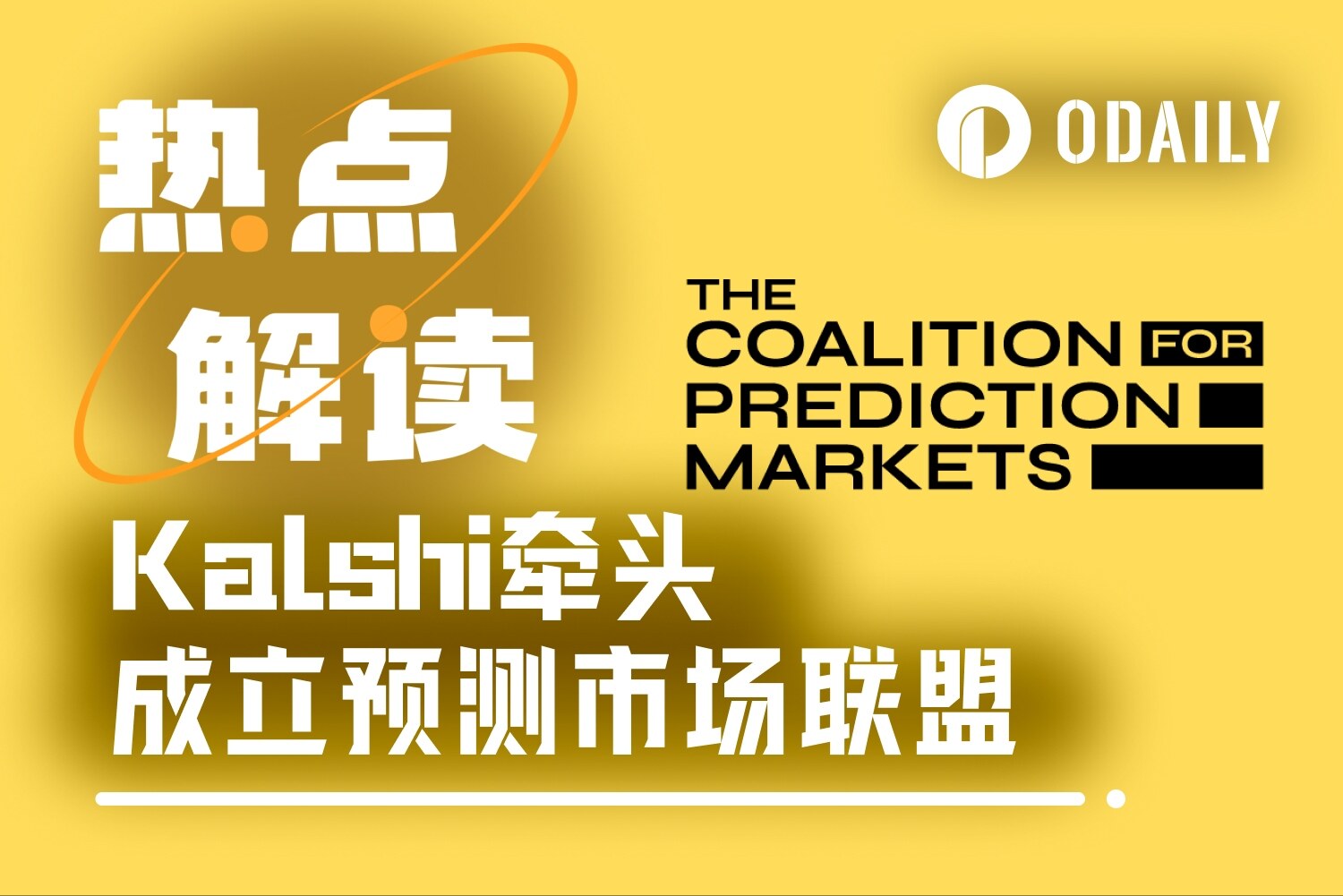OP Research: Looking at the origin, representative projects and future development of DeSci
Original Author: Sihan, CloudY
Original editor: Vincero, YL, Doctor Strange
secondary title
1. Funding issues
Traditional scientific research seeks scientific research funding and resources in a centralized way, such as the National Natural Science Foundation of China, which makes the centralized scientific research method have a lot of problems in the funding application process, such as a few mathematical valves controlling and monopolizing the entire funding application; secondly The whole process of applying for funding is tedious and inefficient.
secondary title
2. Establish a more open and fair environment to confirm the rights to scientific research results
secondary title
3. Eliminate the monopoly of centralized institutions
secondary title
4. Promote the Citizen Science Movement
first level title
2. Current representative DeSci concept projects
In this paragraph, several representative DeSci projects that the author considers are selected. The selected dimensions include: project ecology (market value, financing history, functionality, importance, number of partners and incubation projects, and the overall industry Status, etc.), project influence (daily activity, social media popularity, etc.), project update frequency, project launch time, team status, etc. At present, WIKI contains a relatively complete DeSci ecology (as shown below), and the entire DeSci track is still in a very early stage. In the current DeSci ecological landscape, DAO is the most prosperous. This should be because DAO is to solve the current DeSci largest It is also the most difficult financing problem to face. The second is to focus on the sector of decentralized financing, and then the concept of publishing and paper literature review platform to solve the pain point of peer review, which is the second biggest problem of DeSci. Other concepts such as NFT-related combinations are still in a relatively wild and early state. The current DeSci project tends to be the most biological track, which may be due to the large number of scientific research biological directions and the recent epidemic factors, and the general public's increased attention to biological science.
This section selects some representative projects for analysis and discussion from literature publication and peer review, DAO concept and the underlying infrastructure of this track. Among them, Molecule has the most complete ecology and the most influential DAO concept and ecological infrastructure. The author recommends that interested readers can learn from this project.
secondary title
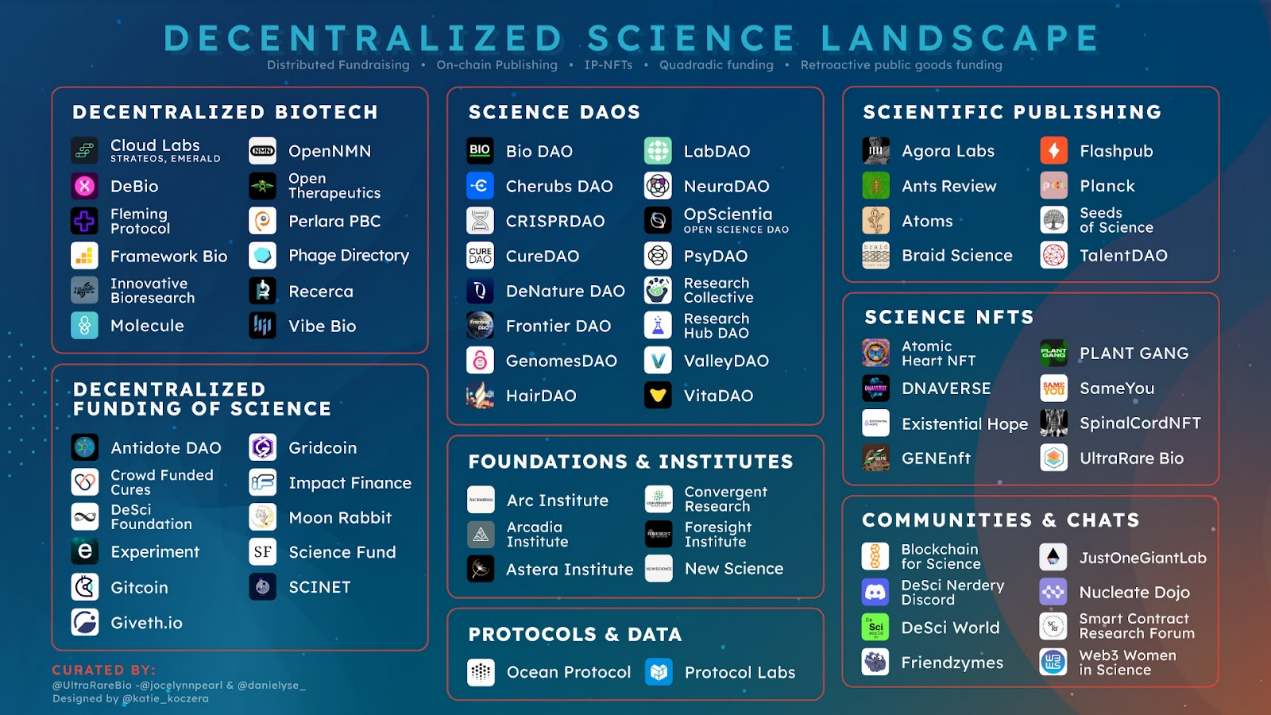
Source:https://docs.google.com/document/d/1 aQC 6 zn-eXflSmpts 0X GE 7 CawbUEHwnL 6 o-OFXO 52 PTc/edit#heading=h.tb 1 n 0 i 2 ql 4 kx
1. Ants-Review: Bounty-like open and anonymous scientific industry peer review system
Ants-Review is from the ETHTurin 2020 Hackathon, submitted by the MetaBounty team. The Ants-Review project won the first prize of the hackathon at that time. And it has received investment from the University of Turin, Gitcoin, and the Ethereum Foundation. (ETHTurin is the first Italian hackathon for the Ethereum community, where hackers can develop Ethereum-based blockchain applications that address local impact and SDG goals).
Peer review is an essential quality control step in scientific publications. In order to solve the problem of expensive, inefficient and centralized peer review of scientific publications, Ants-Review proposes a blockchain-based incentive protocol to reward scientists for their contributions to the work of other scientists and establish a reputation system. The AntsReview protocol allows any author to request peer review of their scientific publications, and the anonymity of the reviewers will be maintained during the review process. It is worth mentioning that the naming of Ant in Ants-Review comes from the founder's belief that the work behind a scientific paper is similar to a complex organism like an anthill, which is the sum of many tiny individuals: in this sum, all Contributions (even if small as ants) are essential to the whole and deserve recognition.
Ants-Review even creatively proposed the concept of PoC (Proof of Concept): During the review process, the review that meets the requirements of the Ants-Review smart contract is reviewed by an external editor, and the external editor verifies the content. If the review is accepted by the author, the reviewer will be able to obtain the ANT token issued by Ants-Review, the ANT token is in ERC 20 format, and the smart contract is written in Solidity language.
secondary title
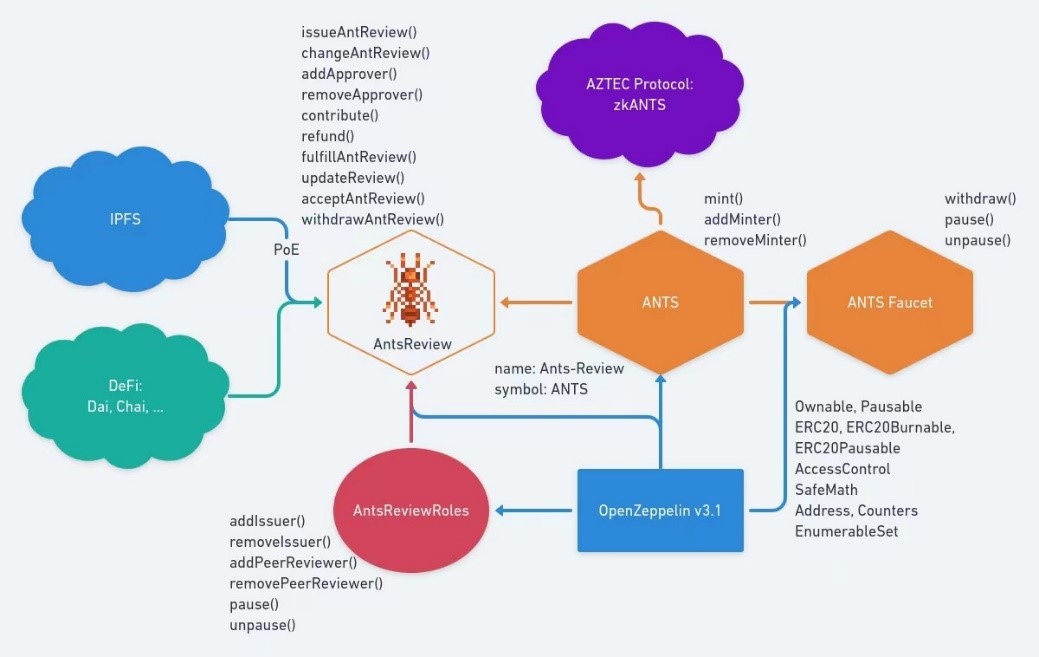
Source:https://github.com/naszam/ants-review/tree/v 0.2.0
2. Molecule: Decentralized biotechnology underlying protocol
The Molecule Project is a fundraising platform for biotechnology research. Currently, about 40 scientists are looking for funding for their projects on the site. Anyone can donate and support future important discoveries. At the beginning of its establishment, Molecule was inspired by the citizen science movement and the openness of drug development. The original idea came from the patient community and aimed to cross the death valley of theoretical and clinical research. The original idea of the project was to use blockchain tools to help advance and fund early drug development. To this end, the Molecule company has made several decisions that have pushed the DeSci space forward, including the idea of IP NFTs, IP-related NFTs (drug or research-based IP), and the launch of the VitaDAO community to fund longevity research.
Molecule is built on top of Ethereum and consists of two layers of systems, namely Molecule Discovery and Molecule Finance. They can create a vibrant ecosystem for decentralized, modular drug development.
Molecule Discovery: On Molecule Discovery, information on biopharmaceutical assets is publicly available. That is, researchers can make their biopharmaceutical assets (typically including data and pre-applied patents) visible to users around the world and interact with potential funders. The platform allows them to list the detailed information of the projects, and interested investors can discover and pay attention to projects in their fields of interest, and negotiate and cooperate with the research team for further interaction.
Molecule Finance: Enabling modular drug development by creating virtual funding and collaborative environments. NFT assets can be transferred to automated market makers to raise funds, or inserted into DAOs managed as portfolios in specific disease treatment verticals. Unlike these structures, which could be almost equated to a biopharma startup or holding company comprised of various global stakeholders, funders, and researchers, the actual governance will be fully assigned to the community.
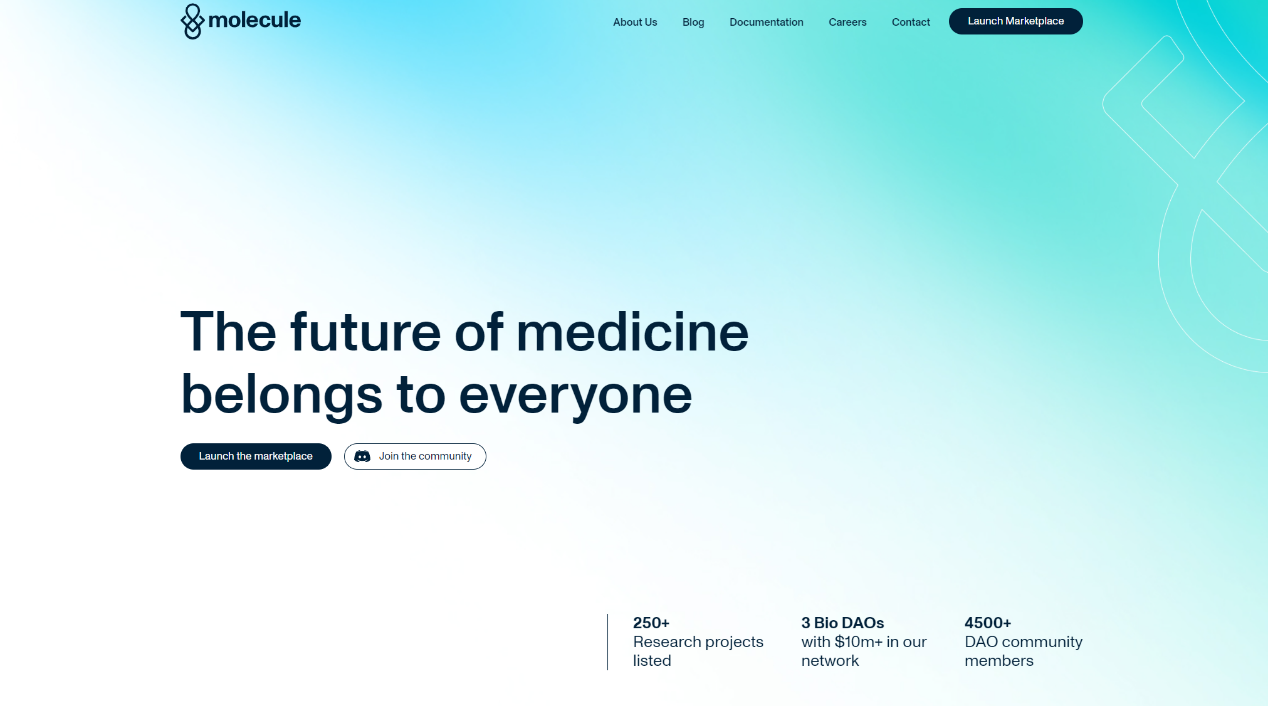
IP-NFT: Molecule's novel approach of using Intellectual Property NFTs (IP-NFTs) enables anyone to share ownership of research projects and future outcomes such as intellectual property, royalties, data, and more. The IP-NFT developed by Molecule is mainly composed of two major contracts: legal contracts and smart contracts. They intersect and interact with each other. Legal contracts are IP licenses whose language references blockchain transactions, addresses, and signatures. A smart contract is an NFT whose code references an IP license agreement and mixes it with certain data components and stores it on a decentralized file storage network. The combination of the two forms an IP-NFT. IP-NFT is a new mechanism for managing intellectual property rights using distributed ledger technology. The goal of IP-NFT is to enable the financing, ownership and trading of IP in an open and distributed market, while preserving the privacy and development potential associated with unregistered IP.
IP-NFT represents full legal intellectual property rights and data access control rights for biopharmaceutical research. But more importantly, they also represent the forerunner of a whole new asset class — virtualized IP-like NFTs. It can be said that in this regard, Molecule is a pioneer in the NFTization of property rights and related information data.
With IP-NFTs, fundraisers, biomedical researchers and biotech companies can:
(1) Commercial fundraising without early filing for patents or creation of startups
(2) Interact directly with stakeholder groups such as patients, collaborate with other researchers to promote open science, and gain attention through the public marketplace
(3) Using data access to control collaborative research tasks
image description
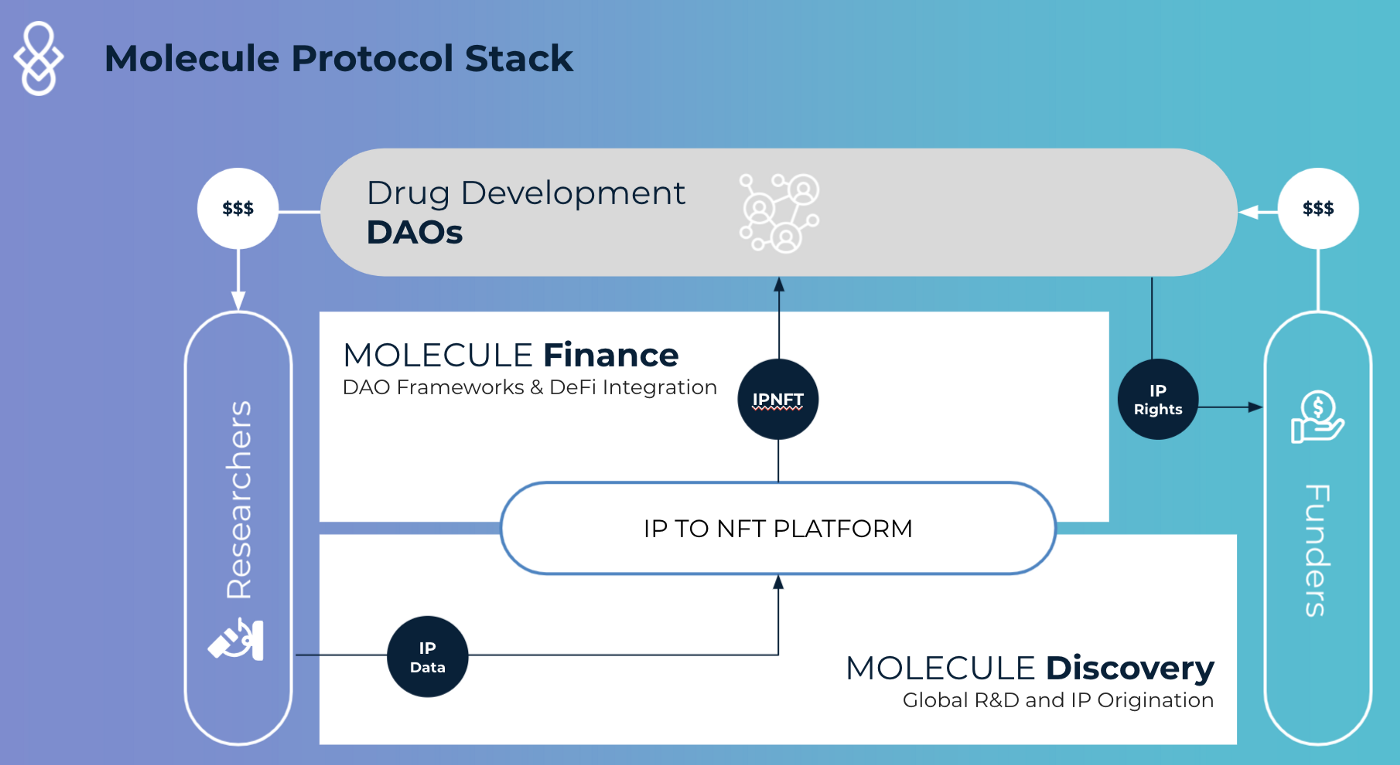
Molecule website architecture
About Molecule ecology: Molecule is built on a modular open stack, using various DeFi (Balancer, Gnosis) and governance components (The LAO, Moloch) and legal framework (OpenLaw) to build its own ecology. In addition to the above functions, Molecule Discovery can also perform asset procurement, asset evaluation, and include infrastructure such as clinical data hosting. Molecule is not limited to the basic functions of its own website, but has established a complete and huge ecosystem, enabling patient collectives and drug development DAOs to hold, manage and interact with real-world IP through NFT. Innovations in NFT (such as funding frameworks by integrating NFT into decentralized auction systems and AMMs such as Balancer, Uniswap or Sushi), some people think that Molecule is more like OpenSea of DeSci track, but in my opinion, Macroscopically, Molecule insists on seeding new DAOs and its DeSci projects, including VITA DAO (the first biotechnology DAO) ValleyDAO AthenaDAO HairDAO, etc., which not only help advance the funds for early drug development, but also help the development of DeSci from the front and middle end, such as Build DeSci track infrastructure such as bio.xyz (DAO's launchpad). The ecology of Molecule is gradually improving, and the layout is grand. We have reason to believe that Molecule will become the leading project of the DeSci concept in the future.
secondary title
3. VitaDAO
image description
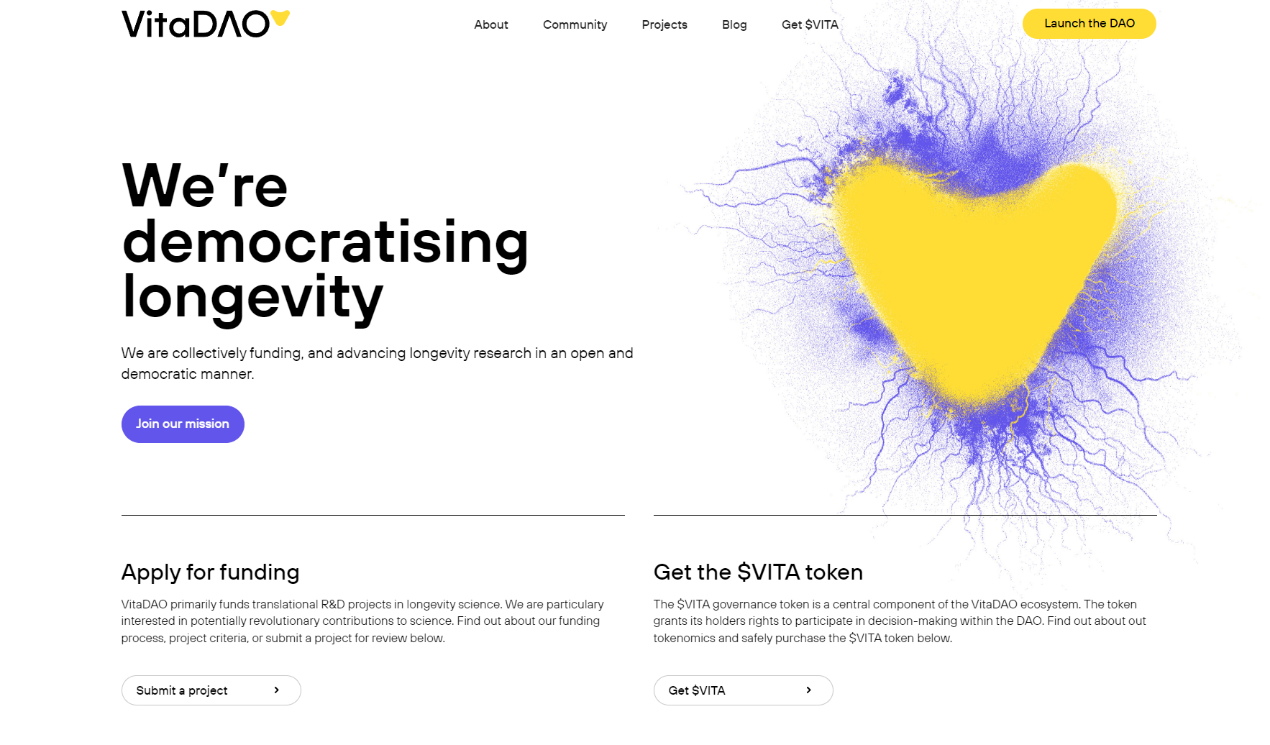
VitaDAO Ecosystem
VitaDAO has issued an equal number of tokens in units of the seconds of the longest-lived person in human history. And promised that if the human life limit can exceed this record, they will issue additional tokens based on the new record. The token VITA can be obtained by contributing work, funds or other resources such as data and IP to VitaDAO. Ownership of VITA allows holders to participate in VitaDAO's democratic governance, direct its research, access and profit from its data repositories, and manage its IP portfolio.
VITA does not grant intellectual property ownership but full governance rights. VITA is designed to follow the principle of a sustainable cycle, that is, as R&D projects receive funds and start to generate data, the value of VitaDAO's IP grows with positive research results. Successful commercialization requires the growth of the VitaDAO ecosystem and greater availability of funds. This in turn attracts higher quality IP, funding more projects and further growing the VitaDAO ecosystem.
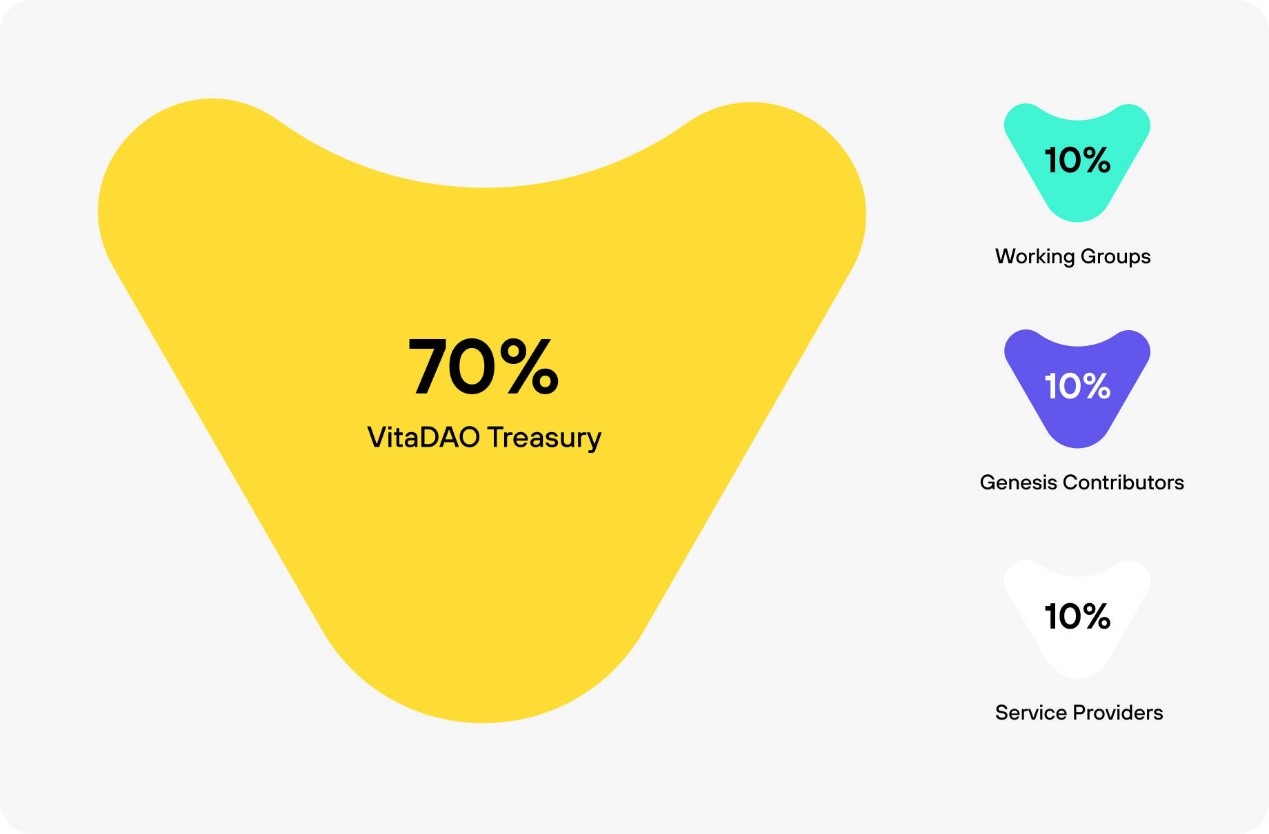
Members of the public can join VitaDAO and manage their IP through VITA tokens by contributing funds, work, or contributing valuable research data or IP assets. The VITA token enables its holders to participate in the decision-making and governance of VitaDAO Research, express support for specific initiatives, and manage its data repository and IP portfolio.
VitaDAO will acquire and commission research, as well as own, develop and monetize the resulting intellectual property assets. VITADAO's product portfolio includes:
(1) NFTs representing intellectual property, patents and licenses of therapeutic research projects.
(2) Data assets generated around its research projects and NFT-funded research and development.
In order to fund more research and provide long-term funding for DAO operations, there are several options for monetizing owned data and IP. Among them, the final ownership of the property rights IP is negotiable. At present, most of them belong to VitaDAO, and a small part belongs to the authors and promoters.
So far, more than 200 DeSci projects have raised funds through Vita DAO, with a fundraising amount of more than three million US dollars.
secondary title
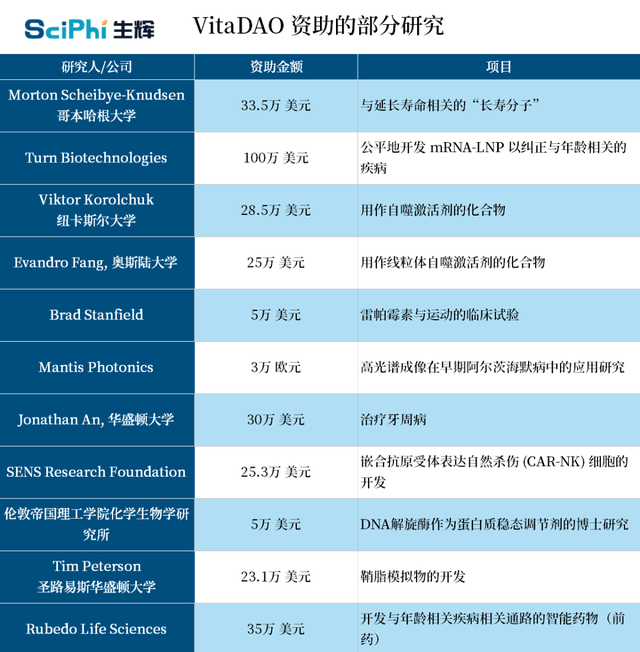
text
LabDAO is a community of scientists and engineers dedicated to sharing open tools for life science research. The community's mission is to accelerate the advancement of the life sciences by making computing and scientific tools accessible to all members.
LabDAO hopes to live in a world that can unleash the potential of individuals to develop technology, so that the research capabilities of researchers and organizations are not limited by funding, hardware, software, and infrastructure. The tools that LabDAO is co-building are designed to lower the barriers for inventors to raise funds, develop technology, and share it in a barrier-free manner.
Open source code has accelerated the advancement of information technology over the past 20 years. This success is made possible by the ability to share code at low cost and reproduce results with high reliability. Furthermore, the sharing of code is accelerated by technology market dynamics where intellectual property is less relevant for time-to-market and implementation-related trade secrets. In contrast, open source in biomedicine has been less transformative. The high cost of duplicating life science processes and the low reliability of generating expected results have been barriers to the dynamics of the open source market. In addition, shared directives are hampered by intellectual property and trade secrets, the main way to fend off competitors during the lengthy regulatory approval process.
To accelerate this process, LabDAO has developed tools such as Openlab, which enable scientists to share their professional tools and services with each other.
About Openlab:
Openlab enables scientists to exchange tools and services without restriction in the global marketplace, rather than the lengthy search for collaborators or contract research organizations. As an important underlying infrastructure of DeSci, Openlab enables every biotechnology scientist, graduate student, postdoc and professor to become an independent inventor or entrepreneur.
Just as Amazon Web Services lowered the cost of starting a new tech company, LabDAO believes the presence of Openlab infrastructure can spur growth for new DeSci biotech companies. Many laboratory services within biotech companies today require high capital expenditures, professional services for the use and control of such equipment and efficient pricing mechanisms for such equipment and use. The emergence of Openlab allows researchers and institutions to trade various laboratory functions and services on a license-free agreement to solve these limitations. At the same time, the addition of the DAO concept and the token incentive mechanism will ensure that the market revenue can be fed back to the community and the market.
The Openlab protocol and its community LabDAO solve the above problems in biomedicine:
(1) By creating an open market for performing biomedical experiments between experiment designers and executors
(2) Improve reproducibility and transparency by defining standards around biomedical tools and establish effective pricing mechanisms
(3) By incentivizing contributors to develop applications or provide instruments/functions
Payments on Openlab can be in the form of shared IP (ownership is new co-authors) or other tokens. Openlab enables the transition from a centralized marketplace with opaque researchers and siled research institutions to an open peer-to-peer marketplace for laboratory services. Most of the fees generated by the exchange flow back to the open source development of life science tools within the ecosystem.
At the same time, LabDAO will use three mechanisms to ensure the quality of service for transactions within its community:
(1) Funds paid for the transaction will be held in escrow until the user has viewed the results of the purchased service. In the event of a conflict, an independent mediation service may be requested for resolution.
(2) Participants of the Openlab exchange need to stake $LAB tokens proportional to the transaction value they provide and consume. In case of fraud, staked $LAB tokens can be destroyed by the community.
(3) The community is maintaining a list of trusted service providers participating in the exchange. On-chain transaction records serve as the basis for user experience ratings.
The long-term benefits of LabDAO can be divided into three points:
(1) Introducing the Openlab marketplace to reduce barriers to access to biomedical tools and services.
(2) The growth of transactions and potential conflicts around service specifications will lead to the emergence of community-driven unified standards for services and tools.
(3) The on-chain record of transactions, including metadata and data assets, will serve as a dynamically evolving knowledge graph - a global laboratory notebook.
secondary title
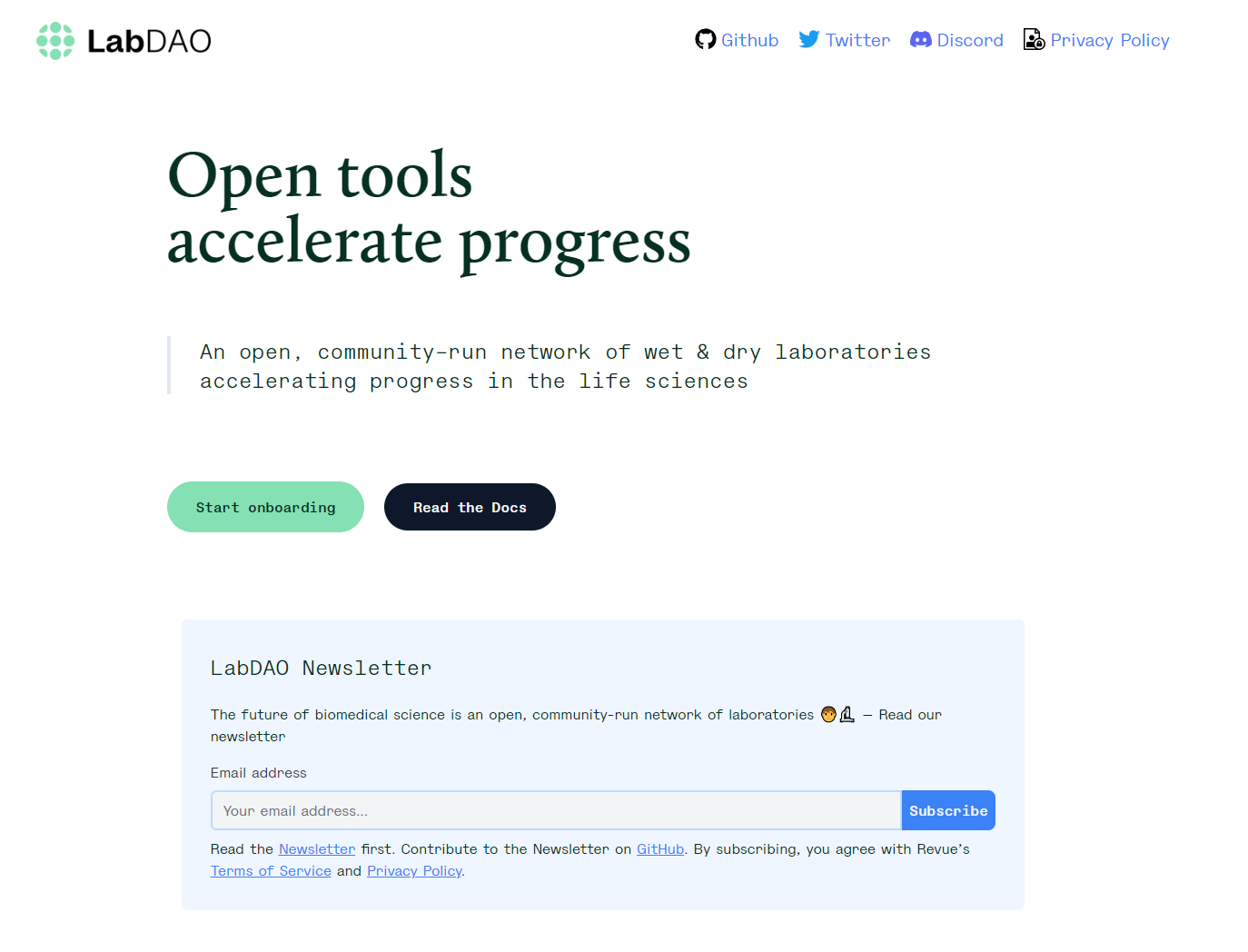
5. Bio.xyz: Accelerating next-generation science with capital, talent, and resources to build a launch platform for future biotech DAOs and DAOs for DeSci projects.
Bio.xyz is a platform launched by a DAO organization incubated by Molecule, providing one-stop supporting services including operations, technology, infrastructure, and professional advice. Since 2018, Bio.xyz has incubated and accelerated the first biotech DAO: VitaDAO, which has funded $2.5 million worth of longevity research and created core DeSci infrastructure, such as the IP-NFT framework, for the DeSci field. A generation of builders emerged to lay the groundwork. Bio.xyz can provide direct support services and funds to various DeSci DAO organizations, and work with DAO organizations to build the future of DeSci.
Bio.xyz is also a biotech DAO accelerator and DeSci meta-governance layer, bio.xyz funds and supports the builders of the decentralized science of the future through the DAO's work in a range of therapeutic areas and infrastructure projects. Bio.xyz provides DeSci DAO with a startup platform, resources, mentorship, a shared network, and a suite of laws and smart contracts. Our goal is to enable DeSci DAO to use IP NFT to fund, manage and develop the intellectual property of universities, companies and researchers around the world, thereby driving the explosive growth of biological sciences.
secondary title
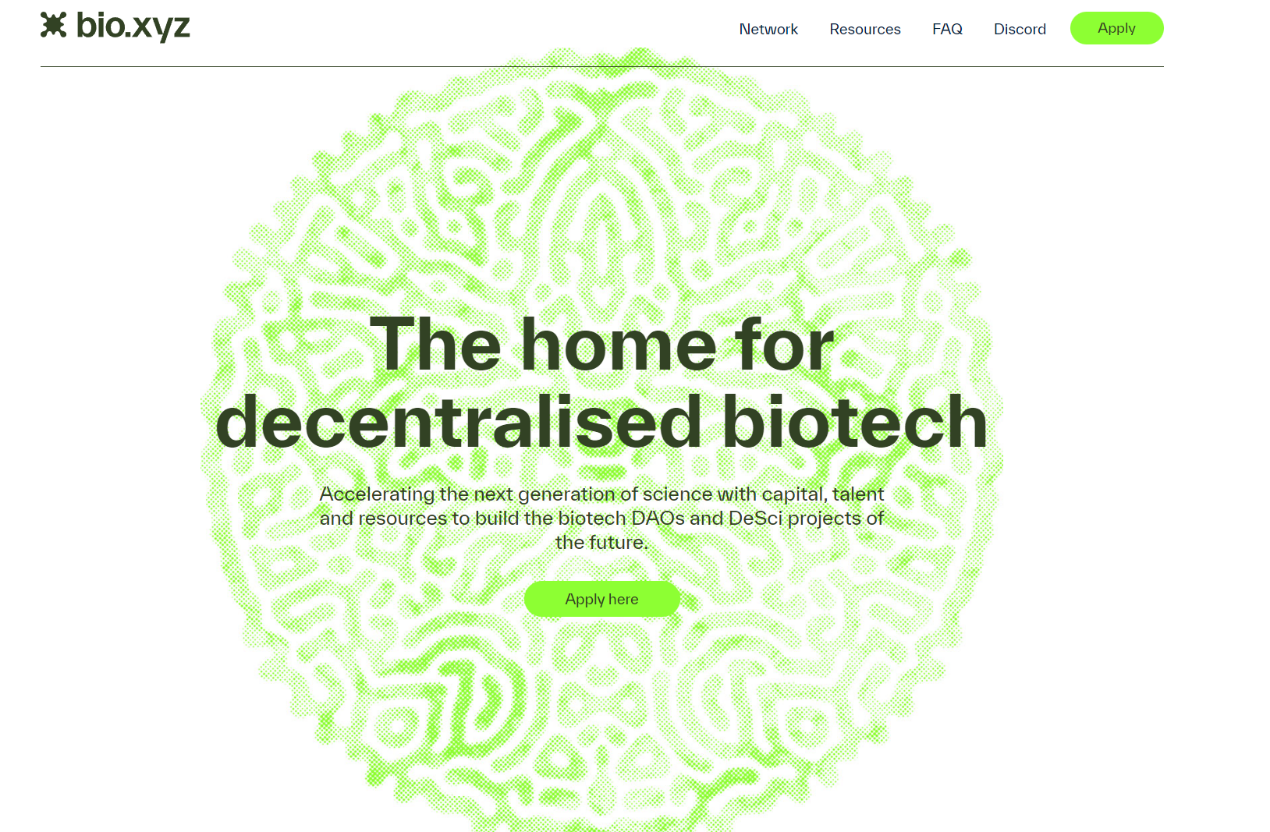
6. Research Hub is an open community dedicated to advancing the process of scientific research results
Research Hub is a community of people who recognize that the world needs a new way of creating and disseminating scientific knowledge. My Research Hub envisions a modern infrastructure for academia that: eliminates inefficiencies; removes as many barriers to scientific research as possible; provides incentives to encourage collaboration; and emphasizes universal communication of science to all audiences. To fulfill Research Hub's mission and realize this vision, the ResearchHub team will follow these values: always act in the best interests of the scientific community; constantly seek truth; seek self-awareness; insist on openness, freedom and responsibility; lessons learned.
The goal of Research Hub is to make a modern portable web3 application where people can collaborate on scientific research in a more efficient way, to become the GitHub of the scientific community. Researchers can upload articles (preprint or postprint) in PDF format, summarize the findings of their work in an attached wiki, and discuss these findings and share results in a fully open and accessible forum.
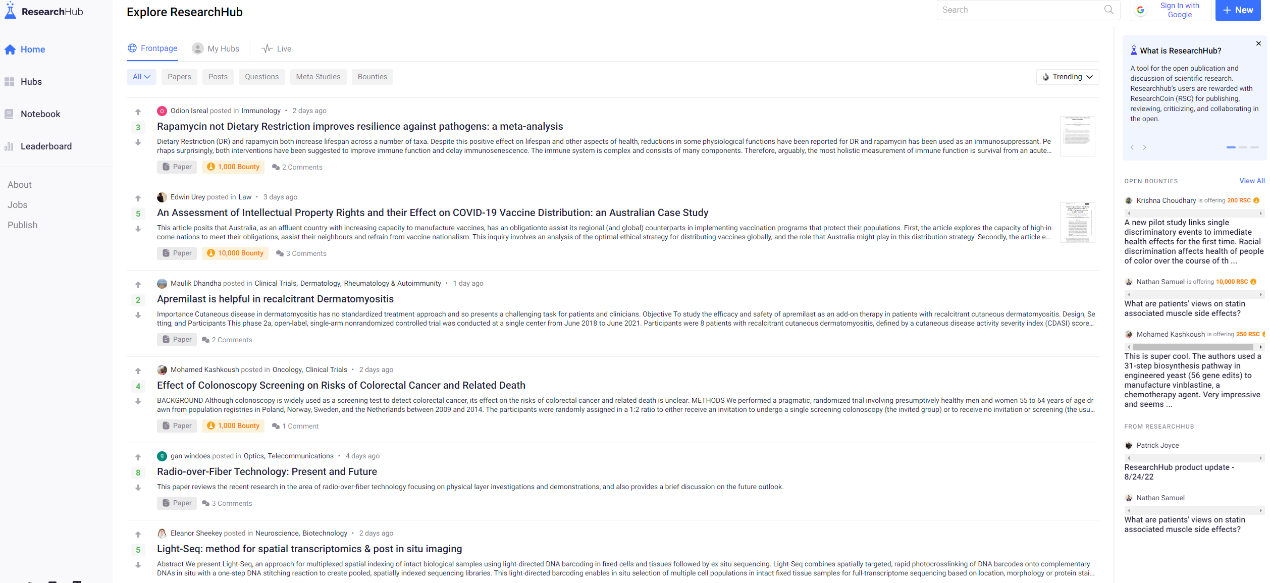
secondary title
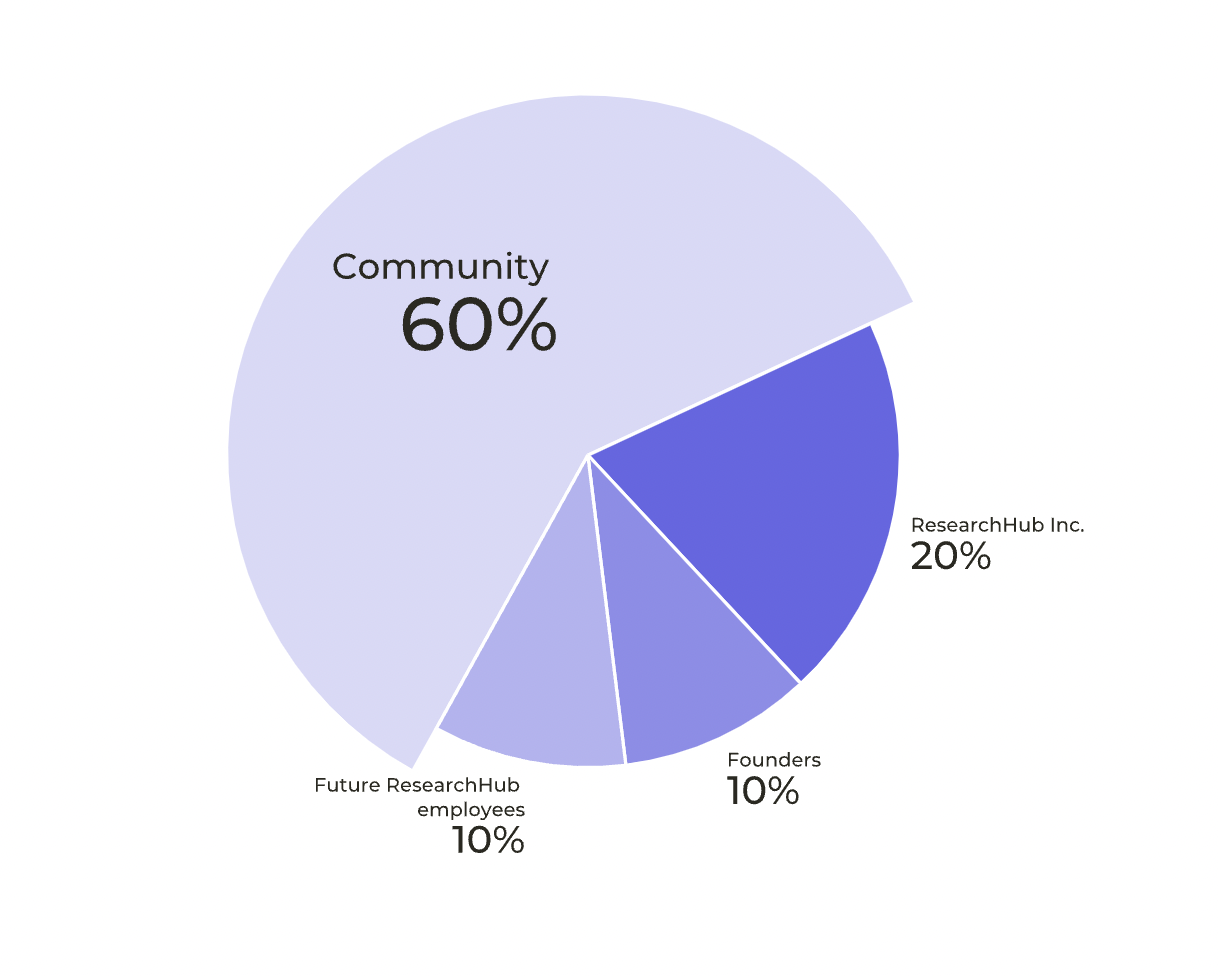
7. The Science Dao: A decentralized idea lab, incubator, and accelerator platform designed to facilitate collaboration and financing among inventors, entrepreneurs, and scientific institutions across a wide range of technology and life sciences.
The Science DAO is a decentralized scientific community incubated by YASHA DAO. Its goal is to bring cutting-edge technology and promote scientific breakthroughs to the public for the benefit of society and mankind. The ultimate goal is to build a complete DAO for science. The Science DAO will create a platform where the world's geniuses can realize their dreams. Science DAO will be open to interested participants in the market. However, the main groups of target participants will be science foundations, institutions and universities. The DAO aims to bring these institutions together to foster growth and bring emerging technologies to the masses. In this regard, the team will focus on business development and strive to build the world's largest decentralized scientific think tank.
The creation of each project will create a series of NFTs for this fundraiser. We collectively refer to this type of behavior as INO (Initial NFT Offering), and the NFT public offering will provide funds for the proposed project. NFT will provide potential investors with the opportunity to invest in the product early. Ninety percent of the funds from NFT sales will be obtained by fundraising projects, while the remaining 10 percent will be returned to The Science DAO as a fund reserve. In NFT transactions, there is a 6% royalty, of which 4% belongs to the project party and 2% belongs to the community.
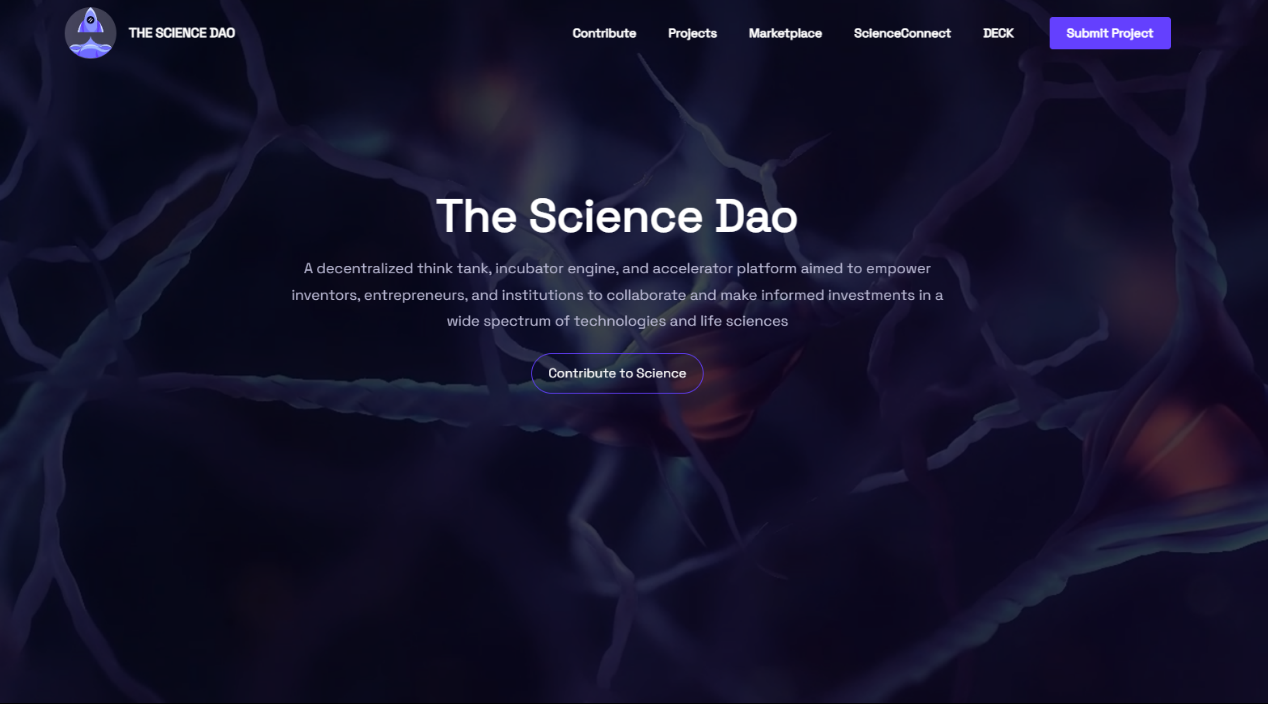
Fundraising through INO is quite an innovative behavior. Compared with FT, the characteristics of NFT itself will be more suitable for guaranteeing investors while also distinguishing different projects on the platform, and royalties can also continue to inject blood into the project. But on the other hand, this also increases the threshold for investors, reduces the liquidity of assets, and also increases the burden on investors.
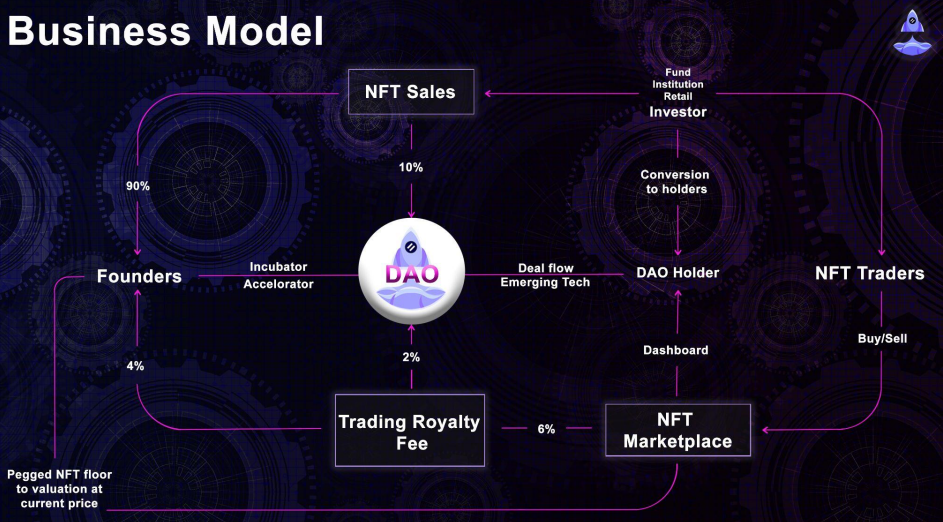
As of March 2022, the total market value of DeSci projects raised on The Science Dao has exceeded 300 million US dollars, and the number of users has exceeded 30,000.
first level title
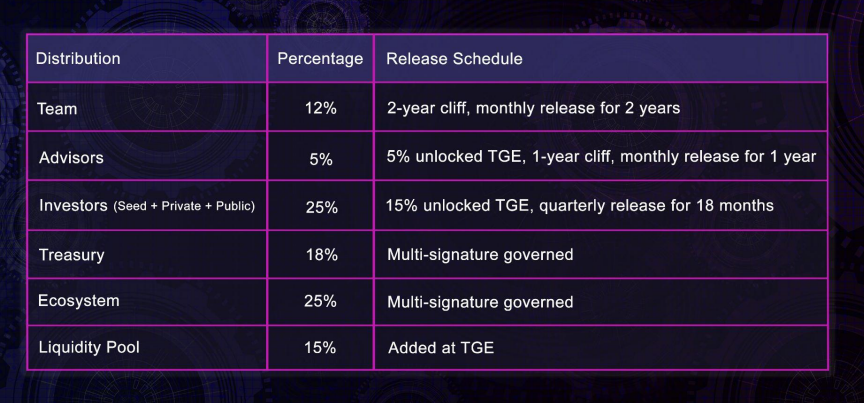
3. Prospects for the possible future development path of DeSci
secondary title
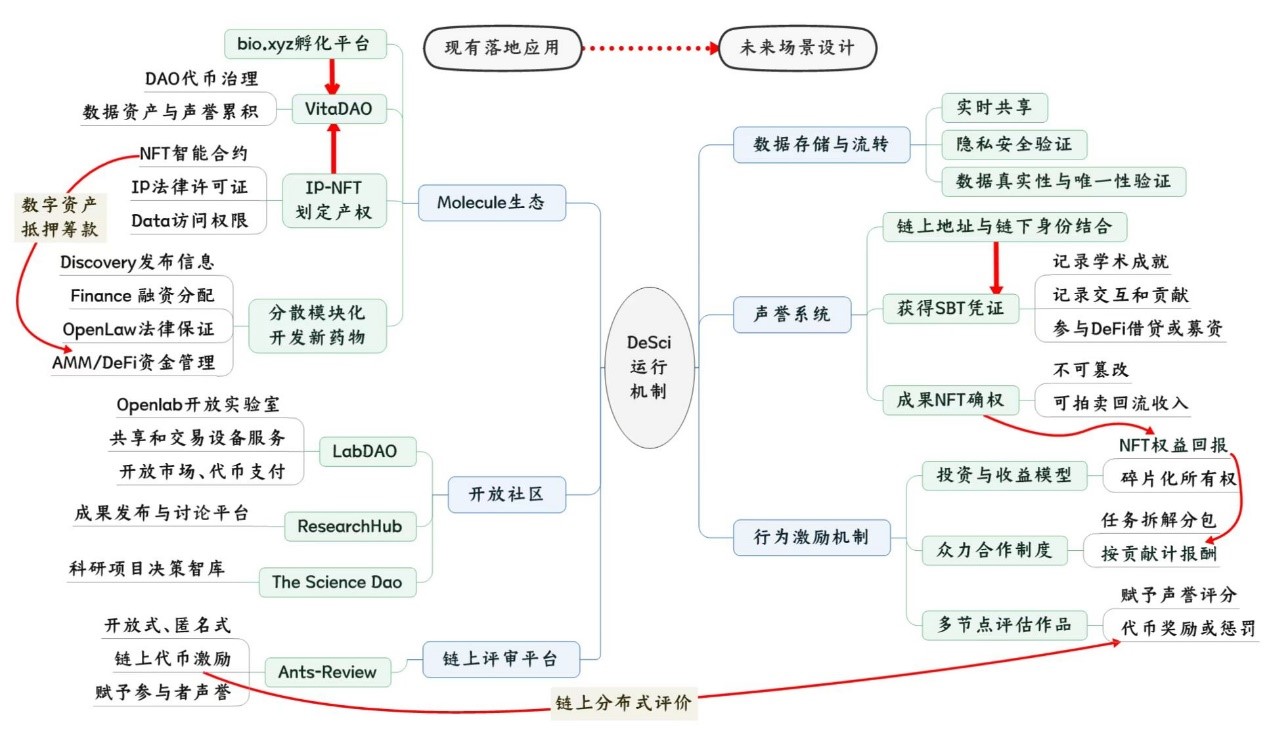
1. Confirmation of Intellectual Property Rights: Academic Reputation System
The confirmation of current academic articles and patents and the transfer of copyright fees for subsequent applications are very consistent with the transparent and non-tamperable characteristics of the blockchain, and now there are relatively mature NFT-based copyright confirmation and royalty transfer solutions. At the same time, on-chain social graphs and reputation systems based on user interactions, such as CyberConnect and Project Galaxy, are also developing rapidly. Therefore, we provide an application scheme for it:
First of all, all addresses can authenticate their own identities by uploading off-chain identity certificates, and obtain a new updateable Soulbound Token (SBT) standard as a proof certificate, so as to bind addresses with personal identities to realize on-chain and off-chain Synchronization of reputation. Based on this identity SBT, we can build an academic reputation system: in this system, all academic interactions will obtain relevant academic SBT credentials, which can also be updated, and the identity SBT of an address will be based on the Therefore, other projects in the ecology only need to read the SBT to know the academic achievements of the corresponding author, instead of obtaining all the academic credentials of the account. In fact, not only academic articles, but any knowledge output can follow this logic.
Taking the publication of academic articles as an example, users who publish academic articles on the chain can obtain a corresponding NFT to confirm the right and a SBT to record. People, even data collectors, etc. will get a corresponding SBT to record their relevance, and the author of the article can also set the NFT royalty distribution by himself, or any other profit distribution, such as winning bonus dividends, etc. Each article will be reflected on the identity SBT, which will be recognized by the reputation platform, and the corresponding score will be given to give value to the behavior. In addition, every act of citing the article will be reflected in the article's SBT and related contribution SBT to prove the change of the holder's influence, and then establish an academic relationship map of each of them. Due to the personalization of Web3 data and the transparency of the blockchain, this will change the cumbersome process from creation to publication of traditional academic articles and the uneven distribution of benefits. It will decentralize each link, but it can clearly define each participant. role.
secondary title
2. Resource redistribution: Behavior incentive mechanism
The program intends to solve the problem of uneven distribution of resources for academic research. The resources are not necessarily funds, equipment or human relations, but can also be environmental resources, climatic conditions, cultural heritage, etc. Drawing on the current long-tail asset market solutions, we can build a resource redistribution platform, which is a project fundraising platform like PartyBid to provide funds for academic research, and at the same time exchange for fragmented NFT as proof of equity; it is also like Keep 3 r The task release platform uses Token or other resources as rewards to seek help, and conducts distributed research on a topic in the form of SubDAO; in addition, it is a peer incentive evaluation scoring platform like Abacus, which uses multi-node evaluation methods to ensure fairness through the reputation system and motivation. Therefore, we designed a prototype for it:
The functions of the platform are divided into three parts: fundraising, cooperation and evaluation. The key to this platform is to combine the three parts with the incentive and reputation system to realize the value of public goods and the short-term benefits of long-term things.
Specifically, anyone can start fundraising on the platform, and the raised funds will be locked on the platform. The fundraiser applies for the use of funds in the form of a proposal, and investors vote to decide whether it is rejected. When the number of people exceeds 10% of the total number, a formal vote will be held, otherwise it will be passed directly. The fundraiser distributes the NFT of the works it produces to investors in the form of fragmented or ERC-1155 standard NFTs, endowing them with partial ownership and dividend rights, and can add additional features such as usage rights and commercialization. that power. In particular, a certain proportion of the income generated by investors’ commercialization will also flow back to the NFT of the work, instead of spreading the net widely and using others to generate profits once and for all. In this way, both contributors and funders can benefit from it.
The cooperation model is like the current Wikipedia. Everyone works together to complete a project, but all contributors can get a reward that matches their contribution. This will define each contributor and provide public goods. output pricing. For example, a team in Singapore studied the correlation between the growth rate of a certain type of mangrove forest and water quality and ocean currents. Due to the geographical constraints of Singapore, this research needs to study mangroves in other regions, such as Malaysia, Indonesia, Thailand, etc. If the team chooses to conduct on-site inspections on their own, not only issues such as compliance need to be addressed, but time and manpower also need to be considered. Therefore, the team can issue cooperation requirements on this platform and provide corresponding remuneration (Token, legal currency, NFT fragments of this article, etc.), which will provide certain financial support for local mangrove protection, thereby producing a positive effect. As a large-scale project, it will inevitably be broken down into several small topics, and then completed by different doctors, graduate students and even undergraduates. When such a decomposition is no longer restricted by geography and countries and regions, the feasibility and completion efficiency of the entire project will rise sharply. At the same time, the research resources of high-quality colleges can be shared with relatively backward research teams in other regions, driving their academic development.
secondary title
3. Data storage, encryption and sharing: data transfer center
The storage of academic data is an ever-present problem. The loss of key data will lead to the abortion of the entire project, so it is necessary to have a reliable storage device and keep a backup. But once the confidential data leaks, the project will be plagiarized or stolen, and the project will stop here. However, most of the data needs to be shared in time and can be verified for authenticity, which forms an impossible triangle. However, the current blockchain technology has ready-made mature solutions that can be borrowed, namely IPFS, ZK and query/API. These three technologies can break down data silos, keep data safe, and synchronize data in real time to verify authenticity.
As a resource integration platform, the data transfer center based on IPFS, ZK and API does not actually build services, so it does not host user data, but finds suitable decentralized data storage services for users and collects storage fees according to user needs . All data will be encrypted to ensure privacy, and data verification is realized through zk technology. Since all detection data will be uploaded in real time, non-confidential data can be shared with users in need in a timely manner. The data API/query access threshold can be set by the data owner to achieve data-based profitability. More importantly, the authenticity and uniqueness of the data itself can be guaranteed through the characteristics of the blockchain, and the complete original data also makes data review and experimental reproduction easier and more credible.
DeSci Ecosystem:
When the three solutions are integrated, a comprehensive DeSci ecological network will be established. The data transfer center has built an essential infrastructure for the ecology to solve the most fundamental data problems, ensure data security, and break information asymmetry. A free market can only be established when all information is transparent. The reputation system provides motivation for participants, which records the contribution of each participant and assigns value to it. This not only makes everyone's contributions transparent, but also protects intellectual property rights. When all efforts can be witnessed, the entire ecology can develop positively. Most importantly, the behavioral incentive mechanism enables the redistribution of resources in the entire ecology, so that everyone can get what they need and maximize the utilization of each resource. This is the key to the sustainable operation of the DeSci ecosystem, and it is also the essence of Web3. Everyone can control their own personal resources and gain benefits based on them.
For example, the graduate project that the researcher did with the doctoral student of the supervisor belongs to a sub-project of a research that will win the Nobel Prize in the future, or simply provides part of the data for it. Years after graduation, the then-researcher was still paid a paltry sum for it, but it came from a Nobel Prize, and the record of the researcher's participation in the Nobel Prize-winning research would live on forever. Researchers can even get an additional low-interest loan from the bank. Another example could be someone randomly writing part of a Wikipedia entry based on their domain expertise. In the future, the number of visits to this entry will increase sharply, and a large number of users will pay for it, a large part of which will automatically flow into the NFT owned by TA. This is all due to the long-term preservation of data, the existence of reputation system and incentive mechanism.
Such an environment is the soil for DeSci to survive, and only then can the flower called "Master" bloom and the fruit that can change the development of the world be born.
Source:
https://antsreview.substack.com/
https://www.molecule.to/
Decentralized science platform Molecule raises $ 13 million in seed funding
https://medium.com/molecule-blog/an-open-bazaar-for-drug-development-molecule-protocol-a 47978 dd 914
https://docs.molecule.to/documentation/introduction/what-is-molecule
http://news.sohu.com/a/581723085 _ 121124375
https://www.vitadao.com/
https://baijiahao.baidu.com/s? id= 1742820648865536500&wfr=spider&for=pc
https://www.vitadao.com/blog
https://docs.labdao.xyz/
https://www.bio.xyz/#resources
https://thesciencedao.io/investing
https://www.researchhub.com/
https://ethereum.org/en/desci/#use-cases
https://www.partybid.app/
https://abacus.wtf/
https://keep 3 r.network/

